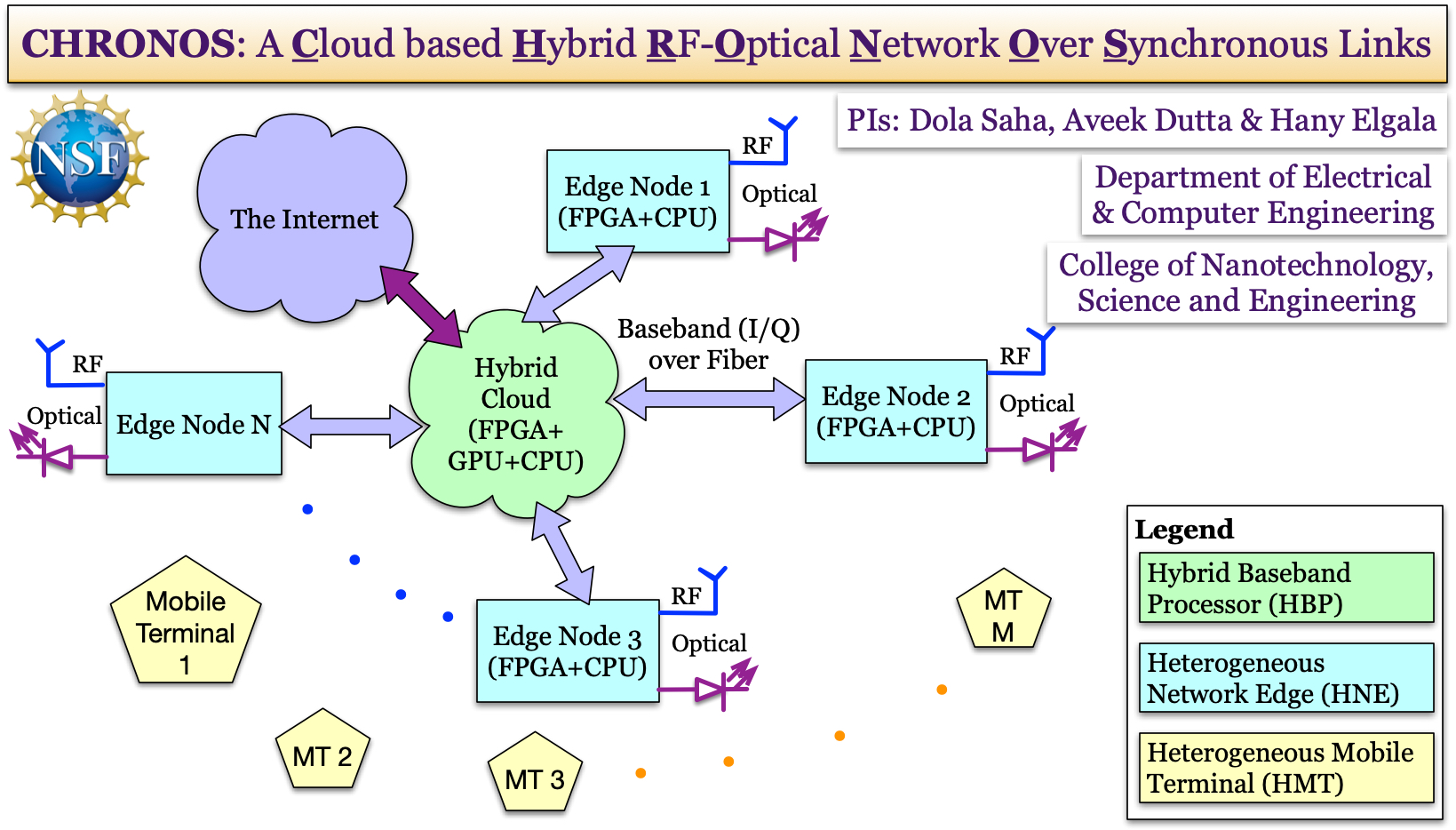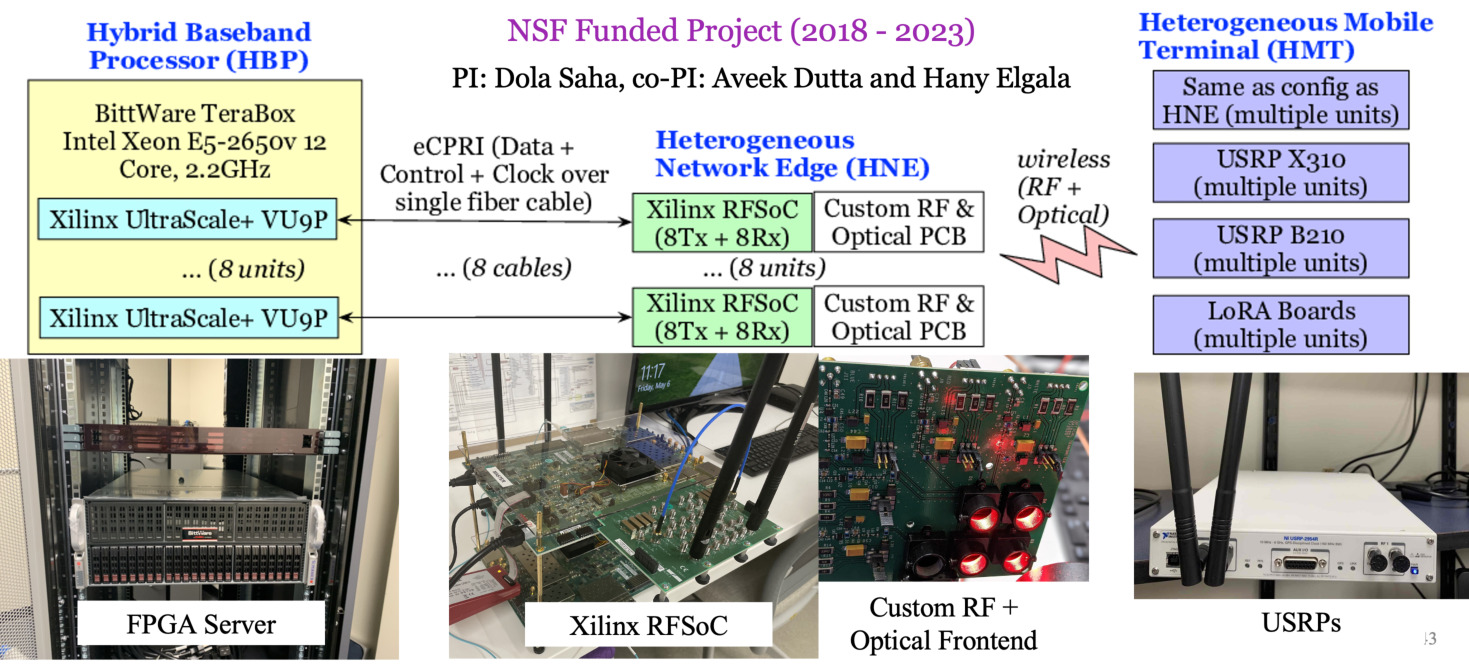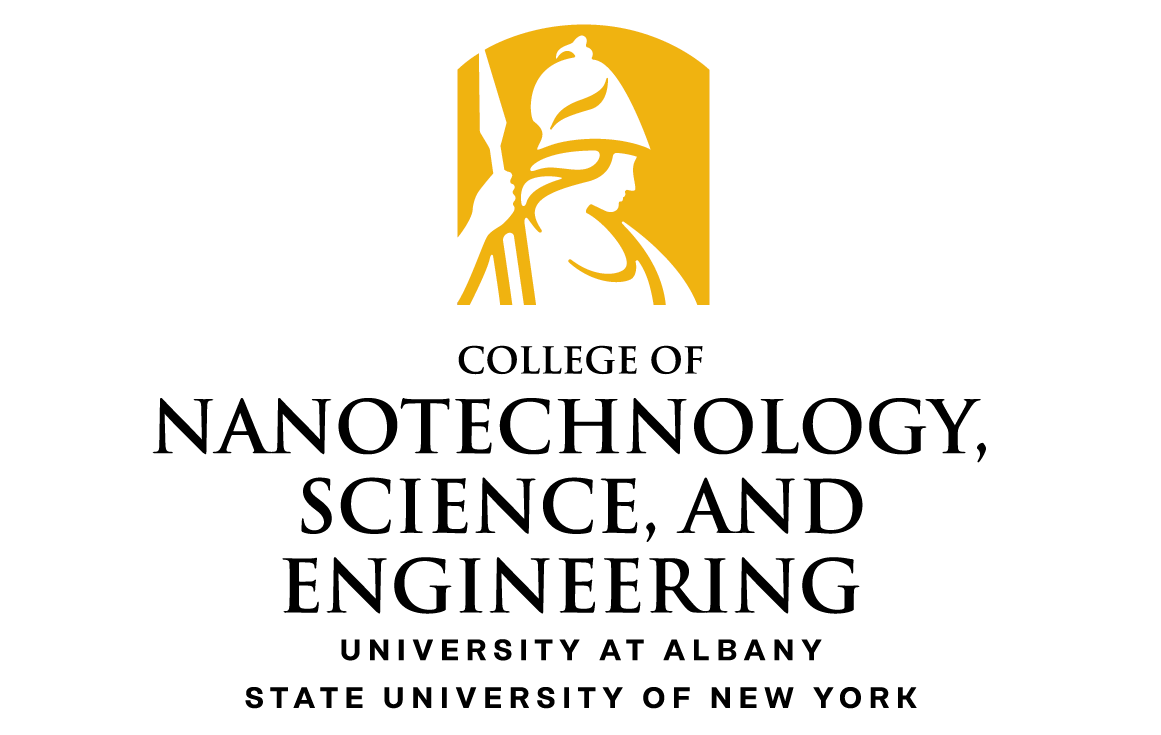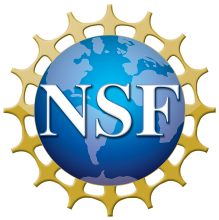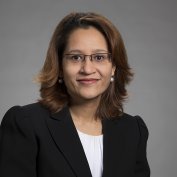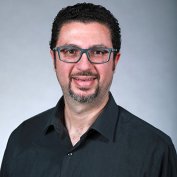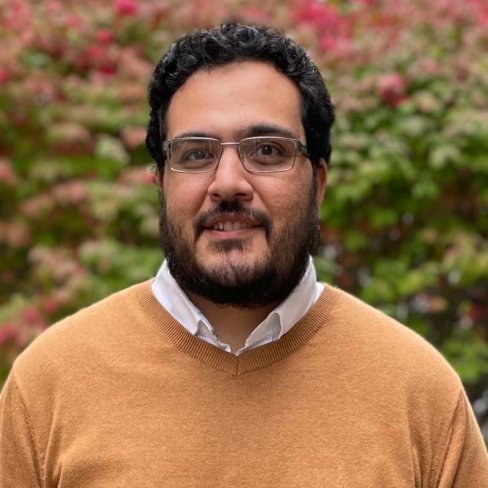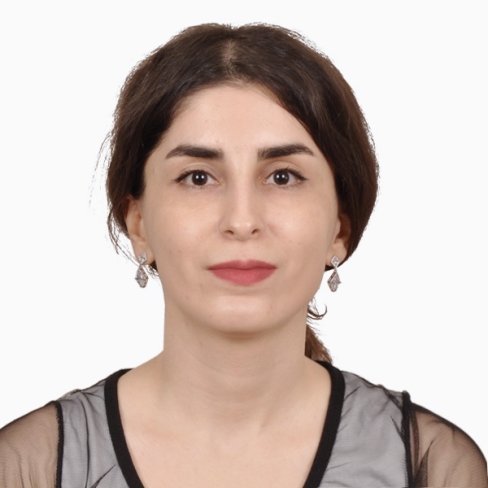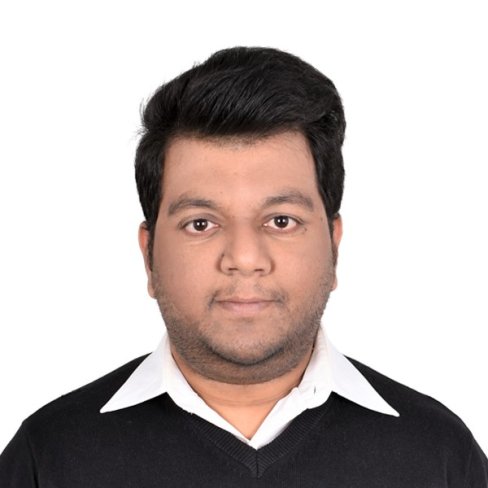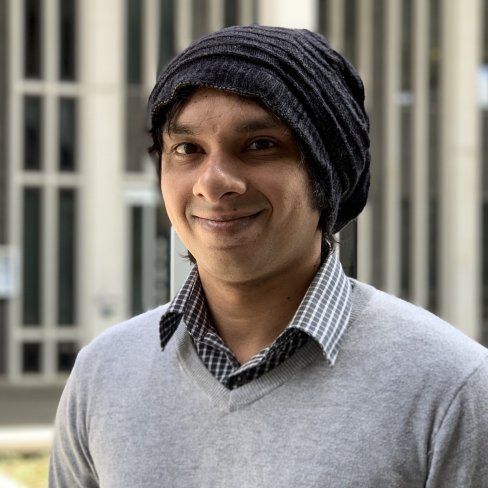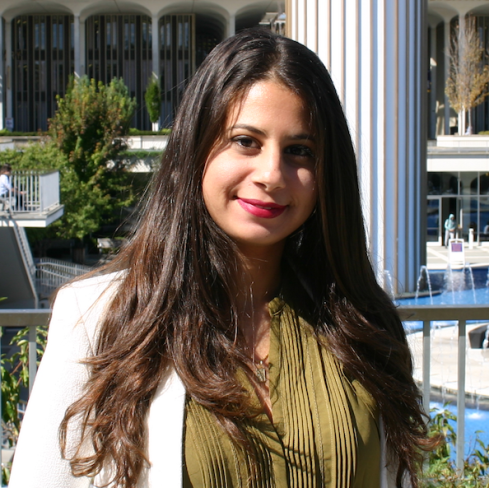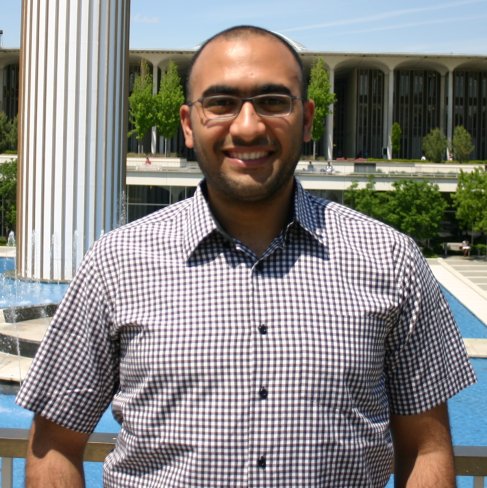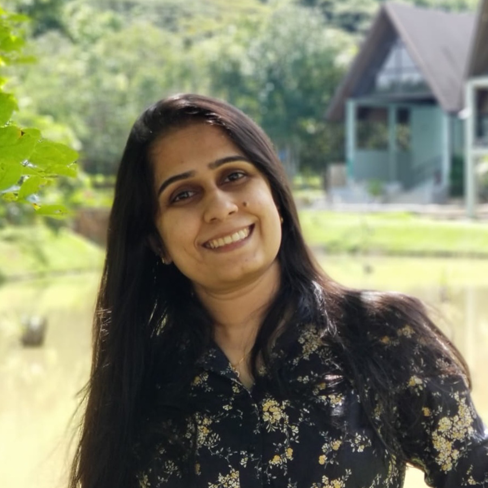A green block in the center called “Hybrid Cloud (FPGA+GPU+CPU)” with Five double sided arrows connecting 4 separate “Edge Nodes” and to the Internet. Also scattered yellow pentagon shapes denoting mobile wireless terminals. On the top-right corner, it mentioned the PIs, the department’s name and the name of the College.
In 2018, Associate Professors (Assistant Professors at the time) in the department of Electrical and Computer Engineering, Dr. Dola Saha, Dr. Aveek Dutta, and Dr. Hany Elgala, were awarded the National Science Foundation (NSF) CISE Research Infrastructure grant of $765,999 to support their project titled, “CHRONOS: Cloud based Hybrid RF-Optical Network Over Synchronous links”. The project was to develop a large wireless testbed that expands the capabilities of current Cloud Radio Access Networks (C-RAN). The primary goal of CHRONOS is to design, build and maintain a multi-node, heterogeneous, wideband, scalable and synchronous C-RAN that will enable emerging applications like Virtual Reality (VR), Industrial Internet of Things (I-IoT), 3D broadcast video, telesurgery, etc.
The combination of tight synchrony and heterogeneity among the network constituents make CHRONOS radically different and foundational to investigate previously unexplored research problems in wireless networking and communication. The key architectural advantage of CHRONOS is the decoupling of baseband signal processing from the front-end allowing for complex, joint processing of signals from spatially distributed radio units. It also optimizes real-time performance by having computation capabilities at the network edge while trading off energy consumption. The flexible architecture of CHRONOS implements DSP kernels by pooling FPGA, CPU and GPU resources for scalable and on-demand provisioning.
This infrastructure cuts across multiple domains including wireless networks, digital communication, signal processing, optical communication, hardware and software architecture and parallel processing. The ability to synchronize distant radio unit to simultaneously communicate in RF and Optical frequencies alleviates the inefficiencies imposed by co-located antennas in existing communication methods. Innovation in distributed antenna geometry will enable spatially efficient applications that can only be sustained by carefully designed architecture of CHRONOS. It also advances the research in virtual cloud platforms that support partial reconfiguration of FPGA to scale the DSP tasks based on demand. These efforts in multiple fundamental domains are not isolated, but are tightly coupled and require close interaction to realize the full potential of this infrastructure.
The figure below shows the implemented architecture with BittWare TeraBox as the Hybrid Baseband Processor, Xilinx RFSoCs as the edge nodes with custom RF and Optical frontends. The mobile terminals are a variety of software defined radios with different capabilities.
Yellow box on the right shows the FPGA server called Bittware Terabox. That is connected over Fiber optic cable supporting the eCPRI protocol to the multiple Heterogeneous Edge Nodes. These edge nodes communicate wirelessly to the Mobile nodes shown as multiple purple boxes.
At the bottom row there are FOUR hardware units: from left to right, 1) FPGA Server, 2) Xilinx RFSoC, 3) Custom RF+ Optical front-end, 4) USRPs
Sponsors
This project is funded by National Science Foundation (NSF), Award number : 1823225, titled "CRI: II-NEW: CHRONOS : A Cloud based Hybrid RF-Optical Network Over Synchronous Links".
The College of Nanotechnology, Science, and Engineering and the University at Albany has generously provided the 3-phase power outlet extension to our Cloud Server, Gigabit Ethernet, wire racks mounted around the department to place the Heterogeneous Network Edge Nodes and space for the testbed setup.



